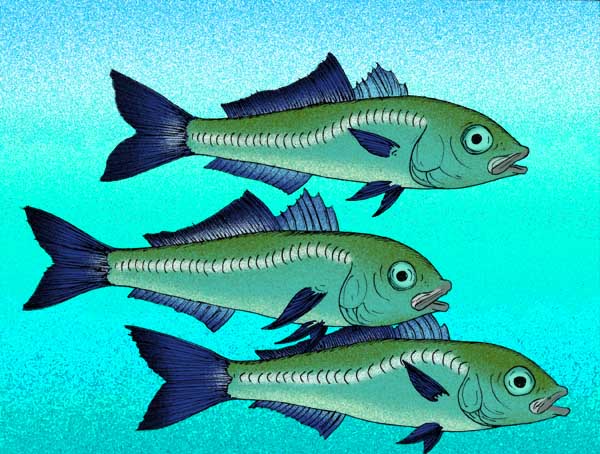|
Hemingwaya
''Hemingwaya'' is an extinct genus of billfish in the monotypic family Hemingwayidae that lived during the earliest Eocene epoch, approximately 56 to 55 million years ago. It contains a single species, ''H. sarissa''. Members of this family are characterized by their elongated, spear-like bills, a feature that defines modern billfish such as swordfish and marlins. It is known from the Danata Formation of Turkmenistan, which represented a far eastern inland arm of the Tethys Ocean, and was deposited in the earliest Eocene shortly after the Paleocene-Eocene Thermal Maximum. The genus name honors famed author Ernest Hemingway, who prominently featured a marlin in his 1952 novella ''The Old Man and the Sea,'' while the species name "''sarissa''" originates from the Greek word for "spear". The fossils of ''Hemingwaya'' provide insight into the early evolution of billfishes, representing one of the first known lineages to exhibit the characteristic bill-like morphology. These fish we ... [...More Info...] [...Related Items...] OR: [Wikipedia] [Google] [Baidu] |
Ernest Hemingway
Ernest Miller Hemingway ( ; July 21, 1899 – July 2, 1961) was an American novelist, short-story writer and journalist. Known for an economical, understated style that influenced later 20th-century writers, he has been romanticized for his adventurous lifestyle and outspoken, blunt public image. Some of his seven novels, six short-story collections and two non-fiction works have become classics of American literature, and he was awarded the 1954 Nobel Prize in Literature. Hemingway was raised in Oak Park, Illinois, a suburb of Chicago. After high school, he spent six months as a reporter for ''The Kansas City Star'' before enlisting in the American Red Cross, Red Cross. He served as an ambulance driver on the Italian Front (World War I), Italian Front in World War I and was seriously wounded by shrapnel in 1918. In 1921, Hemingway moved to Paris, where he worked as a foreign correspondent for the ''Toronto Star'' and was influenced by the modernist writers and artists ... [...More Info...] [...Related Items...] OR: [Wikipedia] [Google] [Baidu] |
Billfish
The billfish are a group (Xiphioidea) of saltwater fish, saltwater predatory fish characterised by prominent pointed beak, bills (rostrum (anatomy), rostra), and by their large size; some are longer than . Extant billfish include sailfish and marlin, which make up the family Istiophoridae; and swordfish, sole member of the family Xiphiidae. They are often apex predators which feed on a wide variety of smaller fish, crustaceans and cephalopods. These two families are sometimes classified as belonging to the order (biology), order Istiophoriformes, a group which originated around 71 million years ago in the Late Cretaceous, with the two families divergent evolution, diverging around 15 million years ago in the Late Miocene. However, they are also classified as being closely related to the mackerels and tuna within the suborder Scombroidei of the order Perciformes. However, the 5th edition of the ''Fishes of the World'' does recognise the Istiophoriformes as a valid order, albeit in ... [...More Info...] [...Related Items...] OR: [Wikipedia] [Google] [Baidu] |
Danata Formation
The Danata Formation (or Danatinskaya, Danatinsk, Russian: Danata Svita) is an Ypresian, earliest Eocene to Middle Eocene sedimentary succession located in Turkmenistan. It is mostly famous for its fish-bearing horizons (Ichthyofauna). The formation for example crops out in the Kopet Dag mountain range in the border region of Turkmenistan and Iran. It was deposited in a far northeastern arm of the Tethys Ocean, Tethys Sea. Previously, it was thought that the earliest horizons of this formation dated to the latest Paleocene (Thanetian). However, more recent studies have found the formation's sapropel to originate from a global anoxic event caused by the Paleocene–Eocene Thermal Maximum, Paleocene-Eocene Thermal Maximum, indicating that it formed just after the Paleocene-Eocene boundary, during the earliest Ypresian. Paleoenvironment The Danata Formation is famous for its ichthyofauna. The fish are found in a thick clay horizon in the middle of the succession, that has been dat ... [...More Info...] [...Related Items...] OR: [Wikipedia] [Google] [Baidu] |


